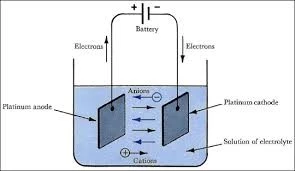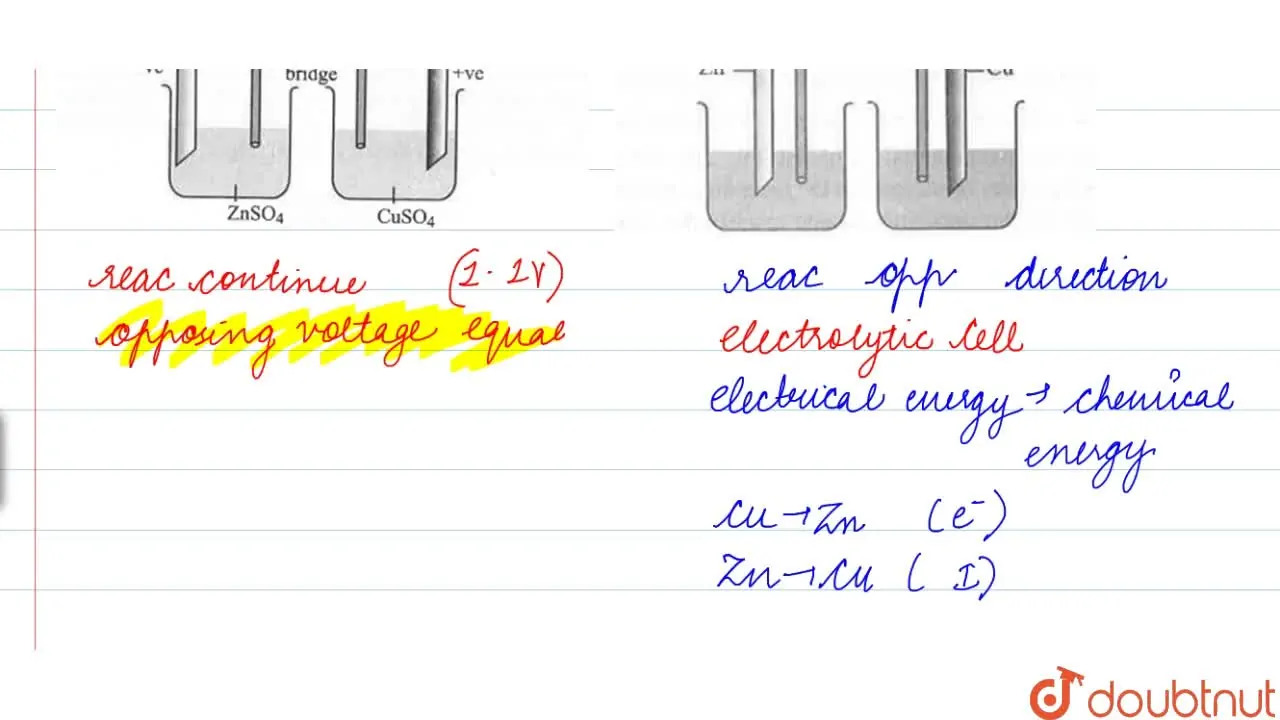Electrolytic Cell
Electrolytic Cell
Introduction
Various elements and substances surrounding us with their properties and capacity to react with different elements. With regard to electrolysis, it is astounding to envision how something as basic as an electric flow can modify the arrangement of an element. At the point when an electrolytic cell becomes an integral factor, it prompts a concoction modification of a substance, which itself, is stunning to learn about.
Electrolysis
Voltaic cells are significant on the grounds that they are the reason for the batteries that fuel present day society. They utilize an unconstrained substance reaction to drive an electric flow through an outer circuit. They are not the main sort of electrochemical cell.
It is likewise conceivable to develop a cell that functions on chemical framework by driving an electric flow through the chemical system. These cells are called electrolytic cells. Electrolysis is utilized to move an oxidation-decrease reaction toward a path in which it doesn't occur immediately.
What is an Electrolytic Cell?
Concerning an electrolytic cell, we can say that in numerous regards, it is a lot of equivalent to a galvanic cell as it requires a salt bridge, two terminals and the movement of electrons from anode to cathode.
In any case, the two cells despite everything figure out how to be not quite the same as one another in numerous regards. For one, an electrolytic cell changes over electrical energy into chemical energy and not the other route round.
The following redox reaction in the process is definitely not an unconstrained one and for the reaction to begin, electric energy must be presented in the device. In contrast to a galvanic cell, an electrolytic cell needs both metals to be set in a similar compartment. The positive terminal, which is the anode and the negative terminal is termed as the cathode. An outside battery is utilized for the electrons supply.

Electrolysis Reaction
There are some key learnings which can be concocted out of an electrolysis reaction, which are as per the following:
- For the supply of electrons, an outside electrical source must be utilized. This makes an electrolytic cell a practically inverse of a galvanic cell.
- The electric potential difference between both electrodes is the reason behind why the exchange of electrons happens.
- The practical uses of the procedure of electrolysis remember refining of metals for substantial industries, creation of natural and inorganic items and then some, which are later utilized by different industries for different purposes.
- Whenever a fluid arrangement is exposed to the electrolytic procedure, water can experience oxidation and reduction reactions. It may even turn into the commanded method in the analysis if an adequate measure of voltage is applied to the fluid arrangement.
Faraday’s Law of Electrolysis
In 1833, Michael Faraday found that there is constantly a straightforward relationship between the measure of substance created or devoured at an electrode during electrolysis and the amount of electrical charge Q which goes through the cell.
When a mole of electric charge is made to go through an electrolytic cell, it will release a half mole of a divalent metal ion. Given this hypothesis, Faraday formulated two laws of electrolysis which expresses that the individual load of a substance aggregated at an anode during the procedure of electrolysis is straightforwardly corresponding to the quantum of power that can go through that electrolyte and the weight of an assortment of substances that will be created by passing a similar amount of power will be relative to the respective weight of the given elements.
Difference Between Electrolytic Cell and Galvanic Cell
The electrolytic cell changes over the electric energy to chemical energy. The anode is the positive terminal in the cell where the oxidation procedure occurs. The cathode is the negative terminal in the cell where the reduction procedure happens. The oxidation-reduction reactions are non- spontaneous (need an outside power source). It needs an outer electric source and salt bridge. The two terminals have a potential difference among them.
The galvanic cell changes over the chemical energy to the electric energy. The anode is the negative terminal in the cell where the oxidation procedure occurs. The cathode is the positive terminal in the cell where the reduction procedure occurs. The oxidation-reduction reactions are unconstrained (no need of an outer electric source). There is no outside source. It needs salt bridge, the two anodes ought to appear as something else, and there is a potential distinction between them.
How does aluminum react to the procedure of electrolysis?
Aluminum can be most handily found in many rocks. It is one of the most plentifully found in the outside layer of the earth. Be that as it may, isolation of the metal from contaminations and different metals ends up being an exorbitant undertaking. This is the reasonn behind why separation of aluminum through electrolysis is extremely hard to accomplish. This is on the grounds that, in the given reaction, it would be water which would get electrolyzed in inclination to aluminum itself.
In 1886, researchers Charles Hall and Paul Herault built up a functional way. Their technique was planned for accomplishing electrolysis of the metal in a financial way. The mechanical assembly incorporates a carbon cathode and a carbon anode and an outside layer of solidified electrolyte. Carbon anode is an item that could bring down the anode as it gets consumed.

Similar Questions
Introduction OF Chapter|| Types OF Electrochemical Cell ||Galvanic Cell and Electrolytic Cell|| Types OF Aspects OF Electrolytic Cell ||Quantitative and Qualitative Aspects||Faraday's First Law OF Electrolysis
View SolutionThree different electrolytic cells A, B and C are connected in separate circuits. Electrolytic cell A contains sodium chloride solution. When the circuit is completed, a bulb in the circuit glows brightly. Electrolytic cell B contains acetic acid solution and in this case the bulb in the circuit glows dimly. The electrolytic cell C contains sugаr solution and the bulb does not glow. Give a reason for each of these observations.
View SolutionElectrolytic Concentration Cells
View SolutionElectrolytic concentration cell
View SolutionNernst equation for Hydrogen Electrode|| Concentration Cell|| Electrolyte Concentration Cell||Electrode Concentration Cell||Class Illustrations with Short Tricks
View SolutionAmong Na,Hg,S,Pt and graphite, which can be used as electrodes in electrolystic cells having aqueous solutions?
View SolutionElectrolyte used in voltaic cell is:
View SolutionIn electrolyte concentration cell:
View SolutionThe electrolyte in dry cell is
View SolutionThe electrolyte in dry cell is
View Solution


